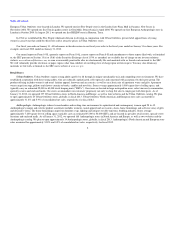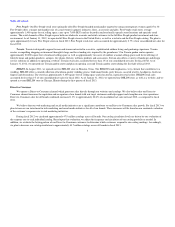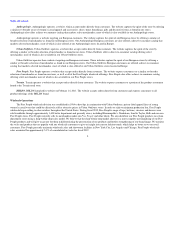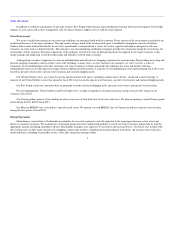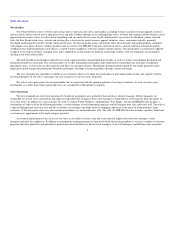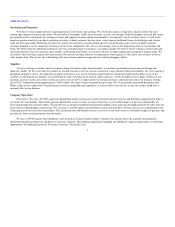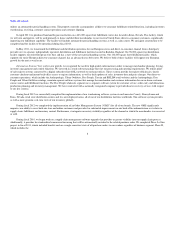Urban Outfitters 2012 Annual Report Download - page 15
Download and view the complete annual report
Please find page 15 of the 2012 Urban Outfitters annual report below. You can navigate through the pages in the report by either clicking on the pages listed below, or by using the keyword search tool below to find specific information within the annual report.
Table of Contents
all. If our stores fail to achieve, or are unable to sustain, acceptable revenue and profitability levels, we may incur significant costs associated with closing
those stores.
We may not be successful expanding our business internationally.
Our current growth strategy also includes plans to continue to open new stores internationally over the next several years. We have limited prior
experience operating internationally, where we face established competitors. International stores have different operational characteristics, including
employment and labor, transportation, logistics, real estate and legal requirements. Furthermore, consumer demand and behavior, as well as tastes and
purchasing trends may differ internationally, and as a result, sales of our merchandise may not be successful, or the margins on those sales may not be in line
with these we currently anticipate. Additionally, our ability to conduct business internationally may be adversely impacted by political and economic risks, as
well as the global economy. Any differences that we encounter as we expand internationally, may divert financial, operational and managerial resources from
our existing operations, which could adversely impact our financial condition and results of operations.
Existing and increased competition in the specialty retail, direct-to-consumer and wholesale apparel businesses may reduce our net revenues,
profits and market share.
The specialty retail segment and the wholesale apparel businesses are each highly competitive. Our retail stores compete on the basis of, among other
things, the location of our stores, the breadth, quality, style, and availability of merchandise, the level of customer service offered and merchandise price. Our
Anthropologie, Free People and BHLDN stores also face competition from small boutiques that offer an individualized shopping experience similar to the one
we strive to provide to our target customers. Additionally, the internet and other new technologies facilitate competitive entry and comparison shopping in our
retail segment. We strive to offer a multichannel shopping experience for our Direct-to-Consumer customers and use social media as a way to interact with
our customers and enhance their shopping experiences. Multichannel retailing is rapidly evolving and we must keep pace with changing customer
expectations and new developments by our competitors. In addition, some of our suppliers offer products directly to consumers and certain of our competitors.
Our Free People wholesale business competes with numerous wholesale companies based on the quality, fashion and price of our wholesale product offerings,
many of whose products have wider distribution than ours. Many of our competitors have substantially greater name recognition as well as financial,
marketing and other resources. We cannot assure you that we will continue to be able to compete successfully against existing or future competitors. Due to
difficult economic conditions our competitors may force a markdown or promotional sales environment which could hurt our ability to achieve our historical
profit margins. Our expansion into markets served by our competitors and entry of new competitors or expansion of existing competitors into our markets
could have a material adverse effect on our business, financial condition and results of operations.
We depend on key personnel and may not be able to retain or replace these employees or recruit additional qualified personnel, which would harm
our business.
We believe that we have benefited substantially from the leadership and experience of our senior executives, including our President and co-founder,
Chairman of the Board and Chief Executive Officer, Richard A. Hayne. The loss of the services of any of our senior executives could have a material adverse
effect on our business and prospects, as we may not be able to find suitable management personnel to replace departing executives on a timely basis. In
addition, if our senior executives do not fully integrate within the structure of our management team and core business, we
12


